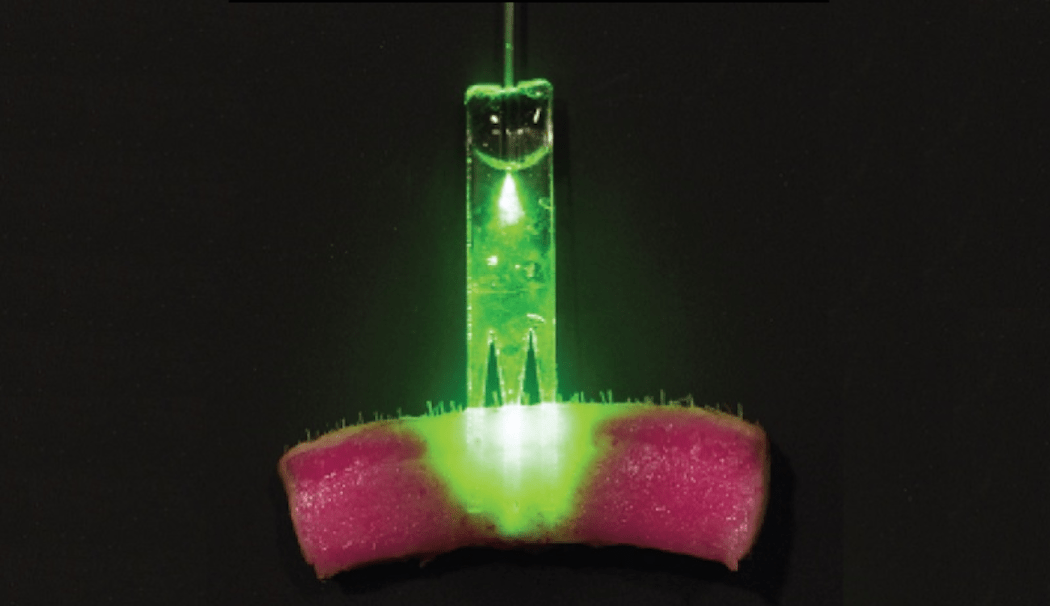
Rose Bengal Dye
In the future, your wounds might not be closed by stitches or staples. Instead, they will be fixed with lasers.
Rose Bengal Dye, a common dye used by optometrists, can be used in tandem with a laser to suture wounds; however, notably, the dye will only go as deep as the laser does, which makes it somewhat less than effective for wounds that penetrate many layers of skin, but it does eliminate the need for staples and traditional sutures or stitching in relation to a number of different injuries.
So, how does it work?
It sounds a little complicated, but the principles are actually pretty easy to understand. In short, the solution can be used as a kind of “biological guide;” it effectively directs the light into the wound, causing a nice, even suture.
Scientists from the University of St. Andrews and Harvard Medical School are behind the discovery and recently published their findings in the peer review journal, Nature Communications.

Nano-Suturing
To break this down a little bit more, collagen, which gives our skin its structure, will bond with the next collagen molecule when it’s missing an electron. The light prompts the dye to take an electron from the collagen, so that it now becomes a free radical and seeks out other nearby atoms to replace that electron.
So in the case of this technique, the collagen will bind with other collagen in the skin, essentially stitching the wound closed.
Unlike traditional methods of suturing however, nano-suturing can help cut down incidence of scarring and inflammation. But as was previously mentioned, currently, the procedure is only applicable for superficial, shallow wounds, which means that scarring probably won’t be much of a concern for the wounds that it can be used on anyways.
But improvements to the method should be coming.
Researchers were able to test the wave guide by closing a 10 millimeter deep wound on pig skin. With further study, they hope to pave the way for “photo-medicine” to heal deeper wounds.